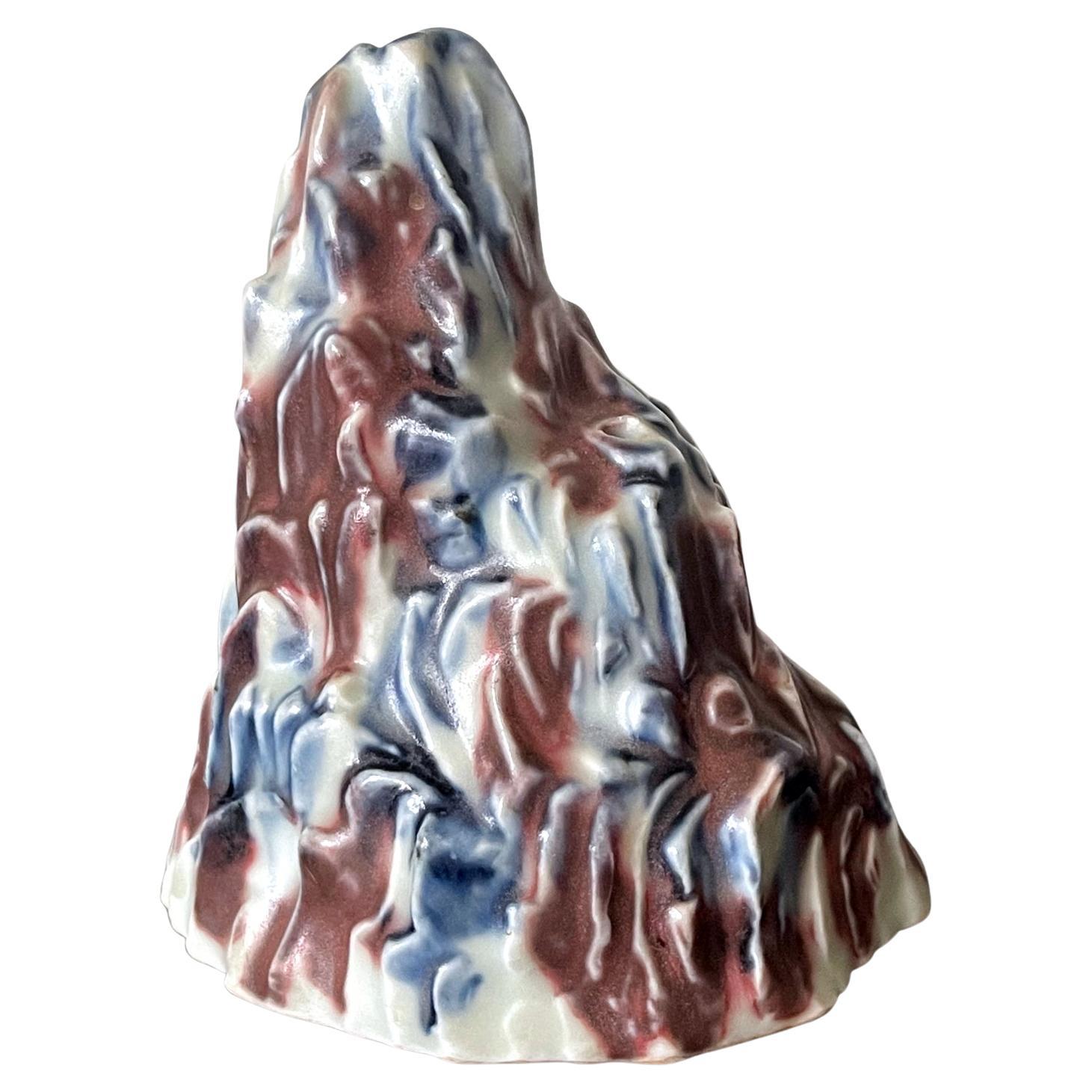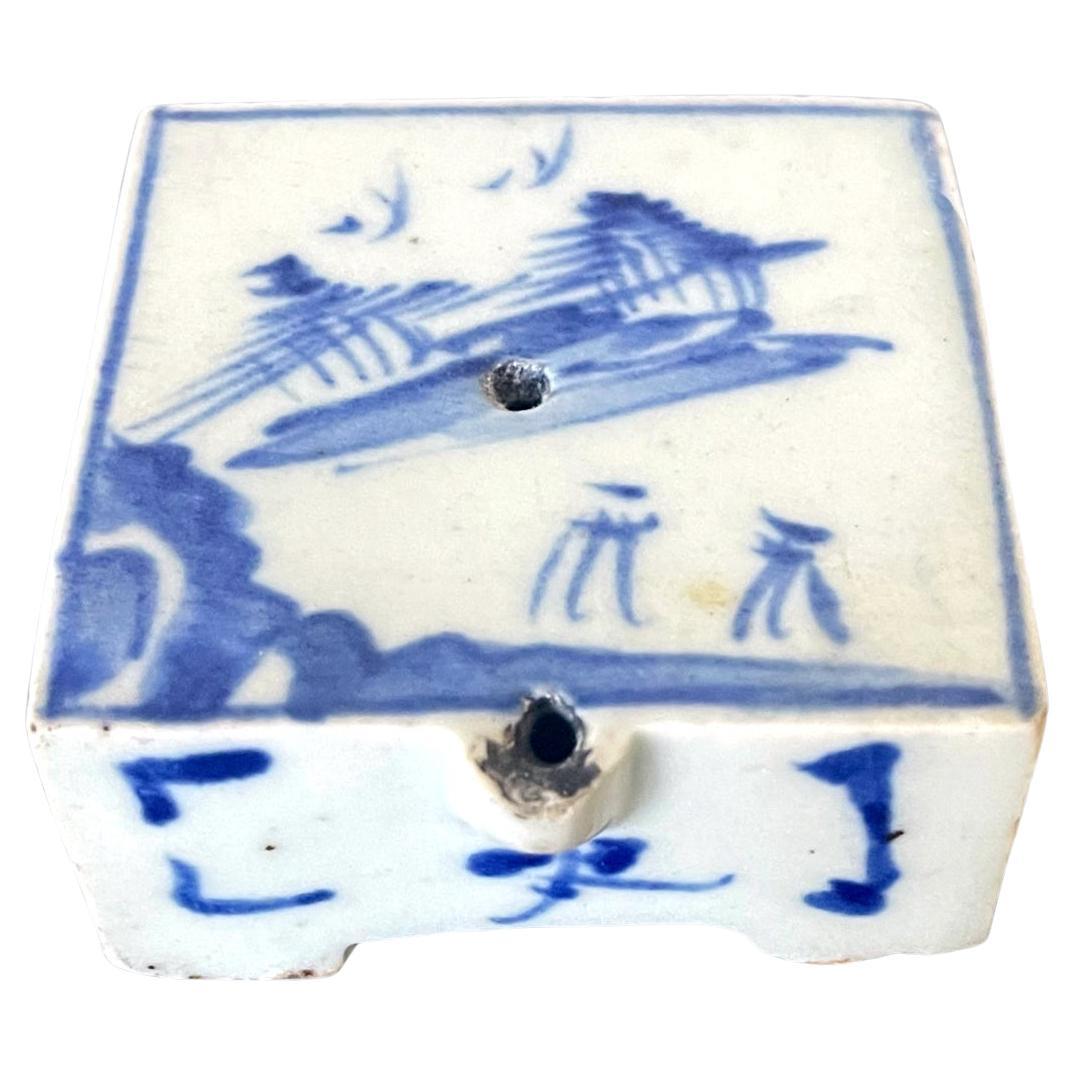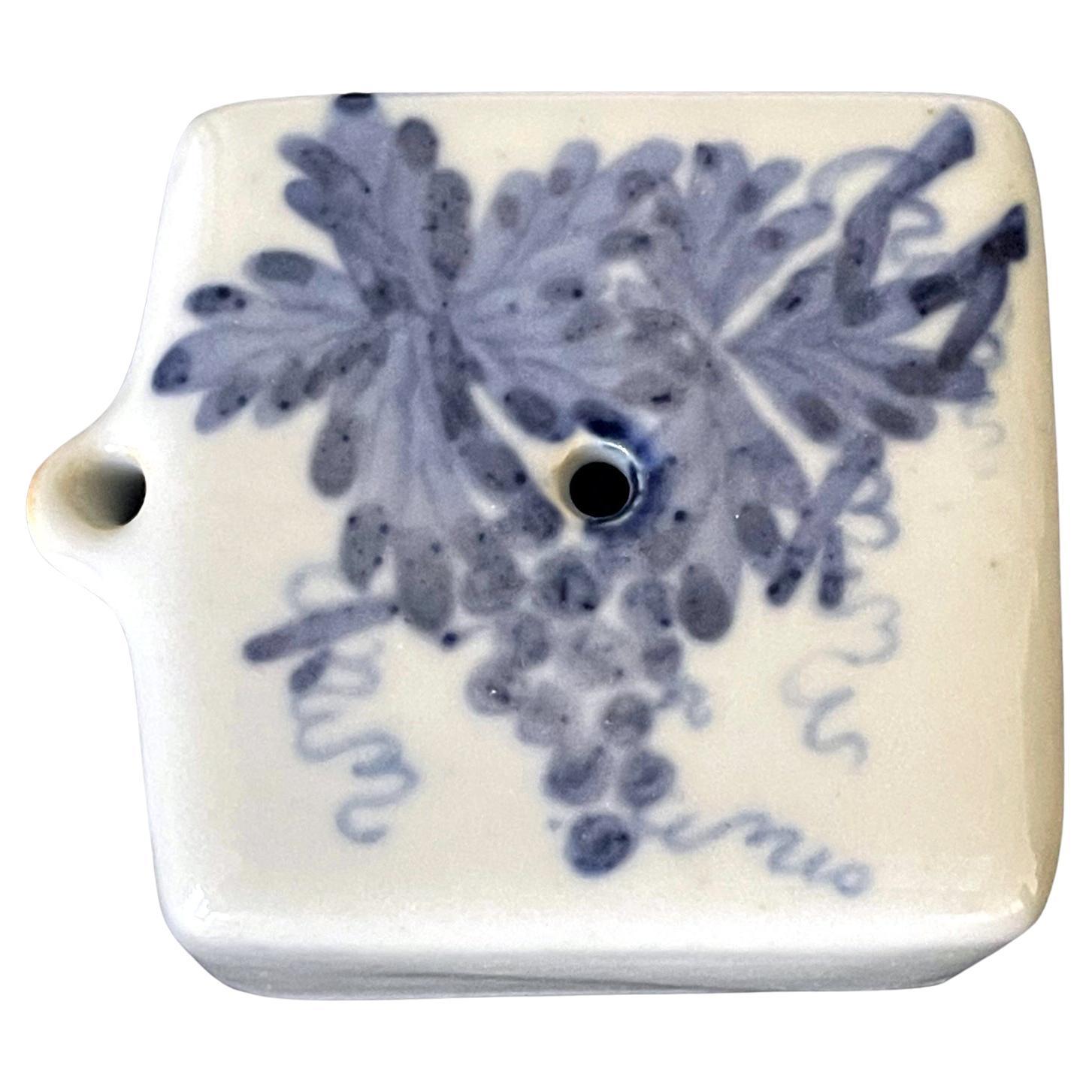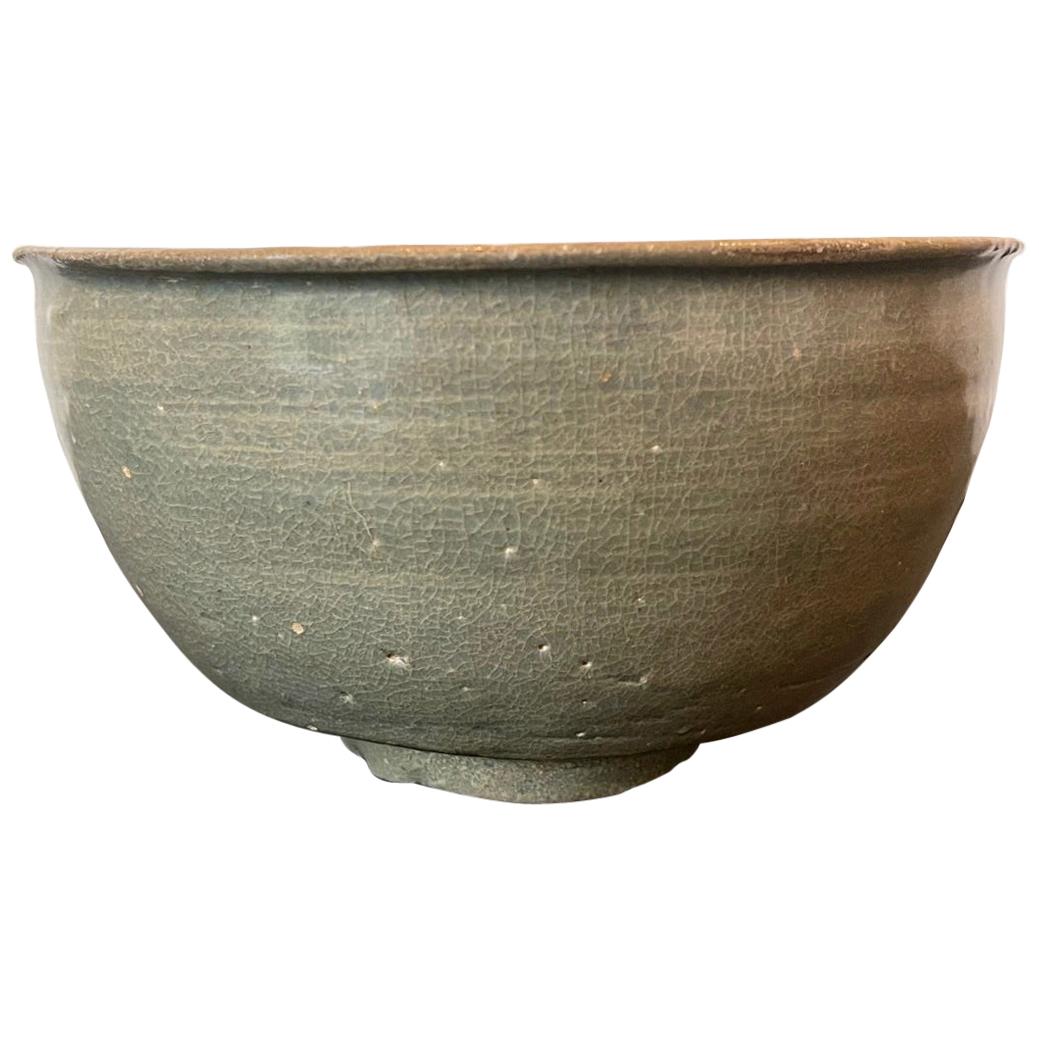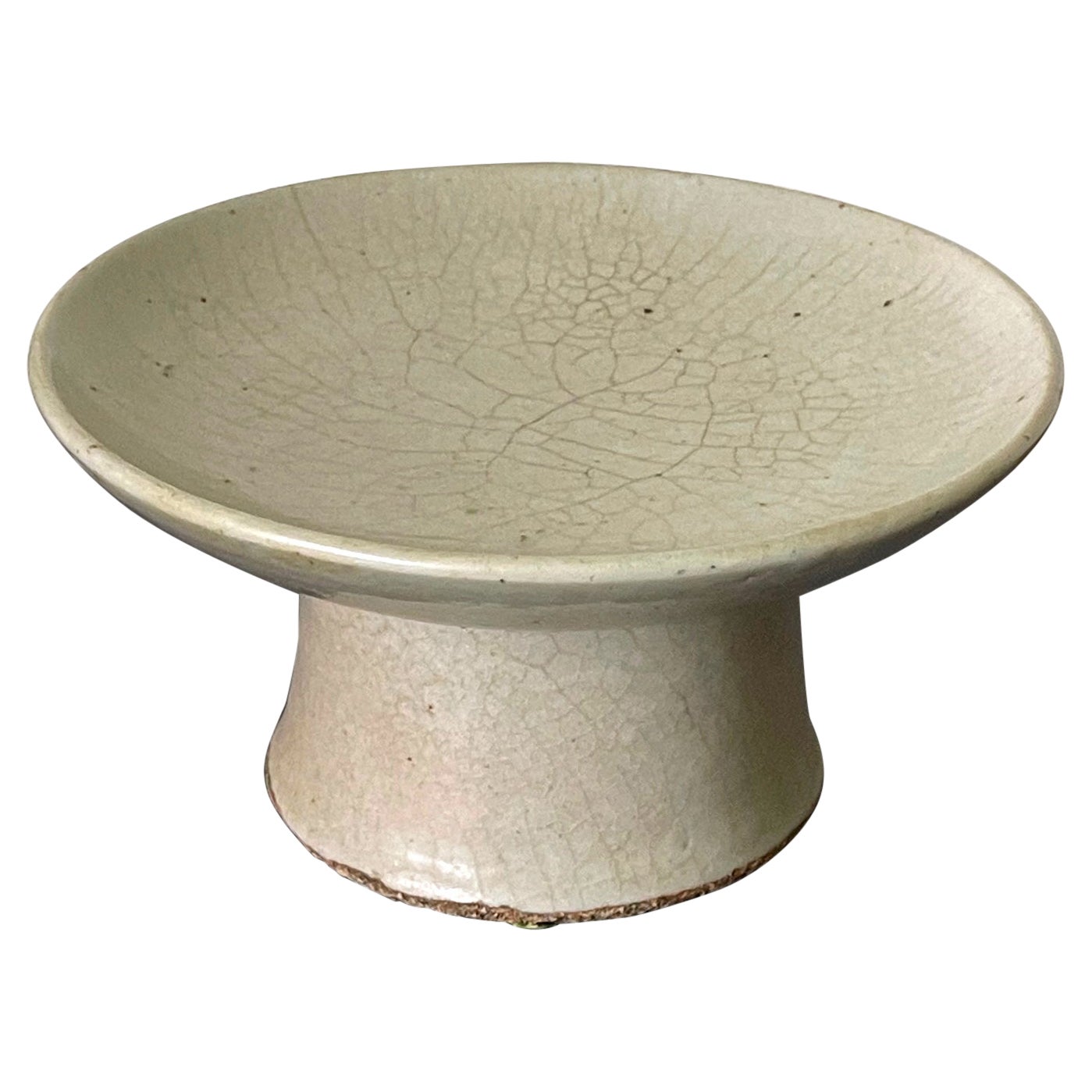Items Similar to Set of Ki-Seto Ceramic Altar Pieces from Korean Empire Period
Want more images or videos?
Request additional images or videos from the seller
1 of 18
Set of Ki-Seto Ceramic Altar Pieces from Korean Empire Period
About the Item
A set of three ki-seto (yellow-seto) ceramic altar pieces made in the period of Korean Empire (1897-1910), a short independent period after Joseon dynasty before the invasion and occupation by Japan. The set consists of a candle holder with a metal pricket, an incense burner with lid and a vase. Traditionally, there were used during ritual ceremony as the accoutrement for a small altar table. The small size suggests that they might be a personal set for a private home shrine. Nicely rendered in shape, the pieces are covered in a light yellow seto glaze, randomly splashed with round green marks, typically found in Oribe ware in Mino kilns. The original wood storage box with specific compartments retains the Hanja (Chinese) inscription on the lid as shown. On the right side, it reads "Spring River Hanyang (Old name of Seoul), Yellow Seto, Three Piece Set, Made in Korean Empire". On the left, it was signed by the artist's name and seal (unidentified). There is another exterior carton paper box to hold the wood storage box which also has residual paper label that read "ki-seto".
A lovely set. The height of the ceramic pieces ranged from 5.5-7" with diameter from 3.5-4".
- Dimensions:Height: 9 in (22.86 cm)Width: 13 in (33.02 cm)Depth: 6 in (15.24 cm)
- Style:Other (Of the Period)
- Materials and Techniques:Ceramic,Glazed
- Place of Origin:
- Period:
- Date of Manufacture:1897-1910
- Condition:Wear consistent with age and use. Ceramics in fine condition, minimal verdigris on the pricket. The lid for the storage box is slightly warped. The exterior carton box is worn.
- Seller Location:Atlanta, GA
- Reference Number:1stDibs: LU945034067532
About the Seller
5.0
Platinum Seller
These expertly vetted sellers are 1stDibs' most experienced sellers and are rated highest by our customers.
Established in 2006
1stDibs seller since 2010
479 sales on 1stDibs
Typical response time: <1 hour
- ShippingRetrieving quote...Ships From: Atlanta, GA
- Return PolicyA return for this item may be initiated within 2 days of delivery.
More From This SellerView All
- Korean Ceramic Water dropper in Mountain Form Joseon DynastyLocated in Atlanta, GAA Korean ceramic water dropper in the shape of a mountain from late Joseon Dynasty circa 1850-1900s. The lovely piece takes a shape of a rugged mountain peak with crags and furrows, ...Category
Antique Late 19th Century Korean Other Ceramics
MaterialsCeramic
- Korean Ceramic Water Dropper Joseon DynastyLocated in Atlanta, GAA small Korean ceramic water dropper in square form on four corner feet, circa 19th century late Joseon Dynasty. The piece features an underglaze blue pa...Category
Antique 19th Century Korean Ceramics
MaterialsCeramic
- Korean Ceramic Water Dropper Joseon DynastyLocated in Atlanta, GAA small Korean ceramic water dropper in square form circa 19th century late Joseon Dynasty. It features an underglaze blue painting of a full cluster of ...Category
Antique 19th Century Korean Ming Ceramics
MaterialsCeramic
- Korean Ceramic Water Dropper in Frog FormLocated in Atlanta, GAA Korean ceramic water dropper in the form of fog circa early 20th century likely from Japanese colonial time post 1910s. The animal form features under...Category
Early 20th Century Ceramics
MaterialsCeramic
- Korean Ceramic Celadon Deep Bowl Goryeo DynastyLocated in Atlanta, GAA ceramic bowl with celadon glaze from Korea, circa 14th century (late Goryeo Dynasty). The particular shape of the bowl suggests that it is likely a "Bo" (Chinese) or "Hattara" (Japanese "Oryoki"). This is a Buddhism term derived from Sanskrit word "patra", which means "vessel that contains just enough". The container was used traditionally by Buddhist monks to ask for alms (donated foods by laymen). The deep volume and the wide opening are conducive to its utility function. The bowl is covered in a jade-color celadon which has very fine and uniform crackles throughout. Upon close inspection of the exterior wall, one can detect a very light brush of white slip circumventing the body. The white slip brushing technique only became popular from 15th century on as a landmark of the Buncheong ceramics...Category
Antique 15th Century and Earlier Korean Archaistic Ceramics
MaterialsCeramic
- Korean White Ceramic Stem Dish Joseon DynastyLocated in Atlanta, GAA ceramic dish with high cylindrical foot in white glaze from Korea, circa 19th century Joseon Dynasty. By shape, this piece is most likely a ceremonial vessel that was used to make offerings on the altar. Although without inscription, we can't rule out that it could be a household item for occasions that were less formal. Such as a private shrine in the household. During Joseon dynasty, the social morals were largely centered on the principles of Confucianism that originated from China. Many ritual ceramic wares were produced for rituals and worships on all level of the society. The ware were often modeled after the archaic bronze ware that elevated them from the aesthetic of daily use pieces. High foot dish like this were made in both round and square shape to suite different use but they were all distinguished with the inscription for their exclusive ceremonial purpose. Of elegant form and harmonious proportion, this stem dish...Category
Antique 19th Century Korean Archaistic Ceramics
MaterialsCeramic
You May Also Like
- Japanese Kutani Treasure Boat 'Takarabune' Censer, Taisho Period, JapanLocated in Austin, TXA wonderful Japanese Kutani porcelain incense burner, koro, in the form of a treasure ship, Takarabune, Taisho Period (1912 - 1926), Japan. The censer boldly modeled as the legendary Takarabune, or Treasure Ship, a mythical ship said to carry the shichifukujin, the Seven Lucky Gods, around the heavens during the first days of the New Year, visiting lucky humans to bring blessings and prosperity. The black bodied, single mast ship sails on the water, its sail full of wind and decorated with the character "takara", meaning treasure. The pierced top of the ship serving as the cover for the censer. It is loaded with magical items and treasure, most prominently, a large coral branch...Category
Vintage 1910s Ceramics
MaterialsPorcelain
- Japanese Tea Bowl Flying Bats & Good Fortune Hand-Built Hand GlazedLocated in South Burlington, VTMint condition From Japan, a hard to find and unusual hand-built, painted and glazed tea bowl featuring "flying bats" - signs of good fortune, created over thirty years ago. A stunn...Category
Late 20th Century Japanese Showa Ceramics
MaterialsCeramic, Pottery
- Chinese Guangxu Coral Glazed Porcelain Brush Washer/Ink WellLocated in Bishop's Stortford, HertfordshireA fine antique Chinese coral glazed porcelain brush washer or inkwell decorated with a bamboo sprig and dating from the early Guangxu reign 1875-...Category
Antique 1870s Chinese Qing Ceramics
MaterialsPorcelain
- Chinese Pair Kangxi Porcelain Famille Verte Buddhist Lion Joss Stick HoldersLocated in Bishop's Stortford, HertfordshireA very fine pair antique Chinese Kangxi porcelain famille verte Buddhist Lion joss stick holders dating between 1662 and 1722. The dogs sit raised on...Category
Antique 17th Century Chinese Qing Ceramics
MaterialsPorcelain
- Chinese Qing Pair Jun-Ware Liver Red Glazed Foo DogsLocated in Bishop's Stortford, HertfordshireA rare and attractive pair Chinese Qing Jun-ware Foo dogs decorated in liver red glazes and dating from around 1850. The porcelain dogs are heavily made and stand raised on rectangul...Category
Antique 1850s Chinese Qing Ceramics
MaterialsPorcelain
- Chinese Graduated Pair Turquoise Glazed Porcelain Mounted Foo DogsLocated in Bishop's Stortford, HertfordshireA very fine and attractive pair of graduated Chinese turquoise glazed dogs of foo figures dating from the first half of the 20th century. The hollow biscui...Category
20th Century Chinese Mid-Century Modern Ceramics
MaterialsPorcelain
Recently Viewed
View AllMore Ways To Browse
Antique Names
Antique Kilns
Antique Ceramic Signs
Used Ceramics Kilns
Antique Wood Storage Box
Antique Ceramic Marks
Antique Shrine
The Private Label
Ceramic Round Box
Japanese Ceramic Set
Antique Exterior Light
Korean Japanese
Light Box Sign
Altar Pieces
Antique Candle Box Boxes
Seal Box
Green Round Ceramic
Korea Ceramics
